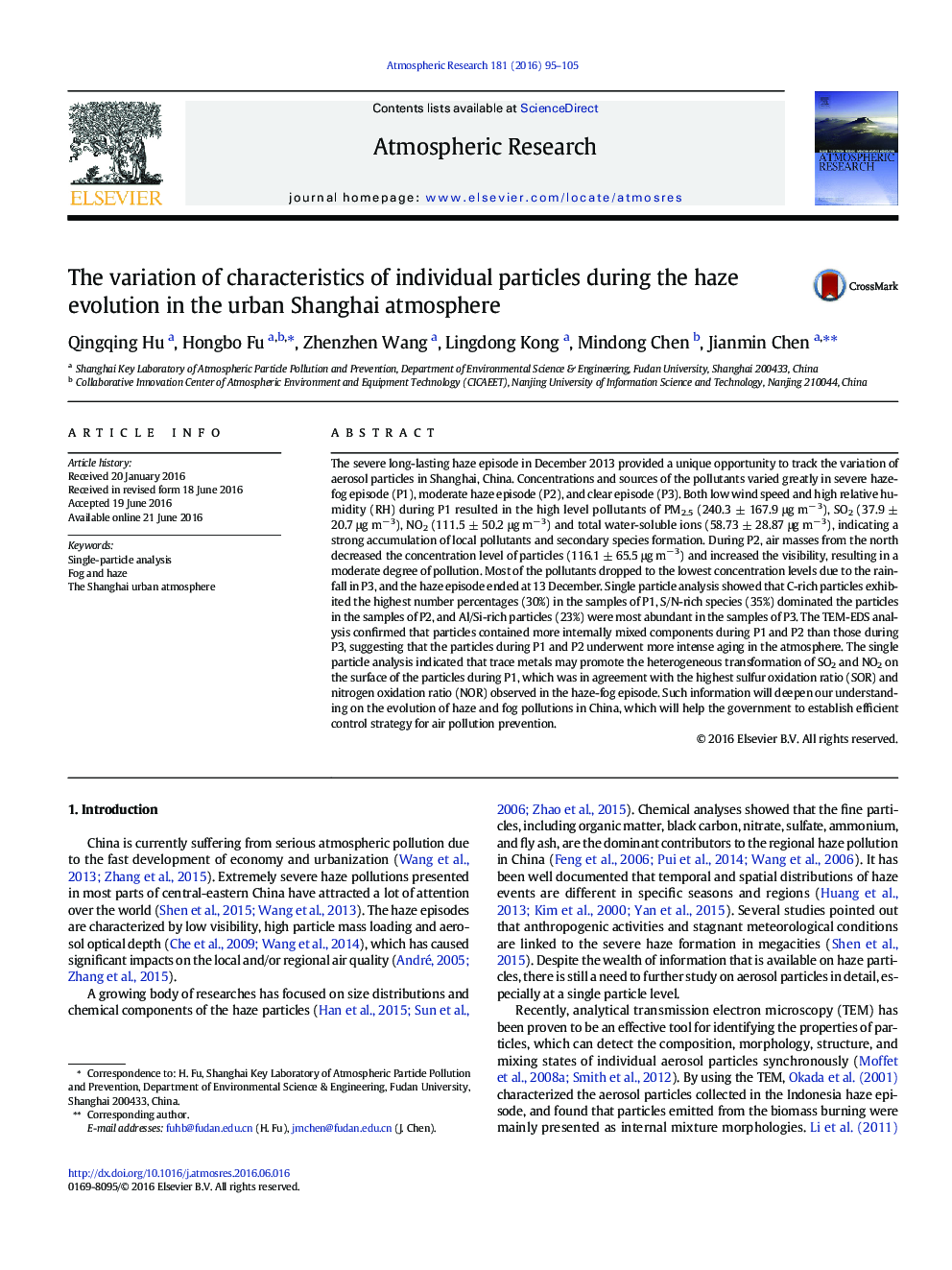| Article ID | Journal | Published Year | Pages | File Type |
|---|---|---|---|---|
| 6342789 | Atmospheric Research | 2016 | 11 Pages |
â¢Low wind speed and high RH during P1 resulted in high level pollutants of PM2.5, SO2, NO2 and total water-soluble ions.â¢The particles contained more internally mixed components during fog and haze episodes than those during clear episode.â¢The trace metals hosted by these particles may promote the heterogeneous transformation of SO2 and NO2.
The severe long-lasting haze episode in December 2013 provided a unique opportunity to track the variation of aerosol particles in Shanghai, China. Concentrations and sources of the pollutants varied greatly in severe haze-fog episode (P1), moderate haze episode (P2), and clear episode (P3). Both low wind speed and high relative humidity (RH) during P1 resulted in the high level pollutants of PM2.5 (240.3 ± 167.9 μg mâ 3), SO2 (37.9 ± 20.7 μg mâ 3), NO2 (111.5 ± 50.2 μg mâ 3) and total water-soluble ions (58.73 ± 28.87 μg mâ 3), indicating a strong accumulation of local pollutants and secondary species formation. During P2, air masses from the north decreased the concentration level of particles (116.1 ± 65.5 μg mâ 3) and increased the visibility, resulting in a moderate degree of pollution. Most of the pollutants dropped to the lowest concentration levels due to the rainfall in P3, and the haze episode ended at 13 December. Single particle analysis showed that C-rich particles exhibited the highest number percentages (30%) in the samples of P1, S/N-rich species (35%) dominated the particles in the samples of P2, and Al/Si-rich particles (23%) were most abundant in the samples of P3. The TEM-EDS analysis confirmed that particles contained more internally mixed components during P1 and P2 than those during P3, suggesting that the particles during P1 and P2 underwent more intense aging in the atmosphere. The single particle analysis indicated that trace metals may promote the heterogeneous transformation of SO2 and NO2 on the surface of the particles during P1, which was in agreement with the highest sulfur oxidation ratio (SOR) and nitrogen oxidation ratio (NOR) observed in the haze-fog episode. Such information will deepen our understanding on the evolution of haze and fog pollutions in China, which will help the government to establish efficient control strategy for air pollution prevention.
